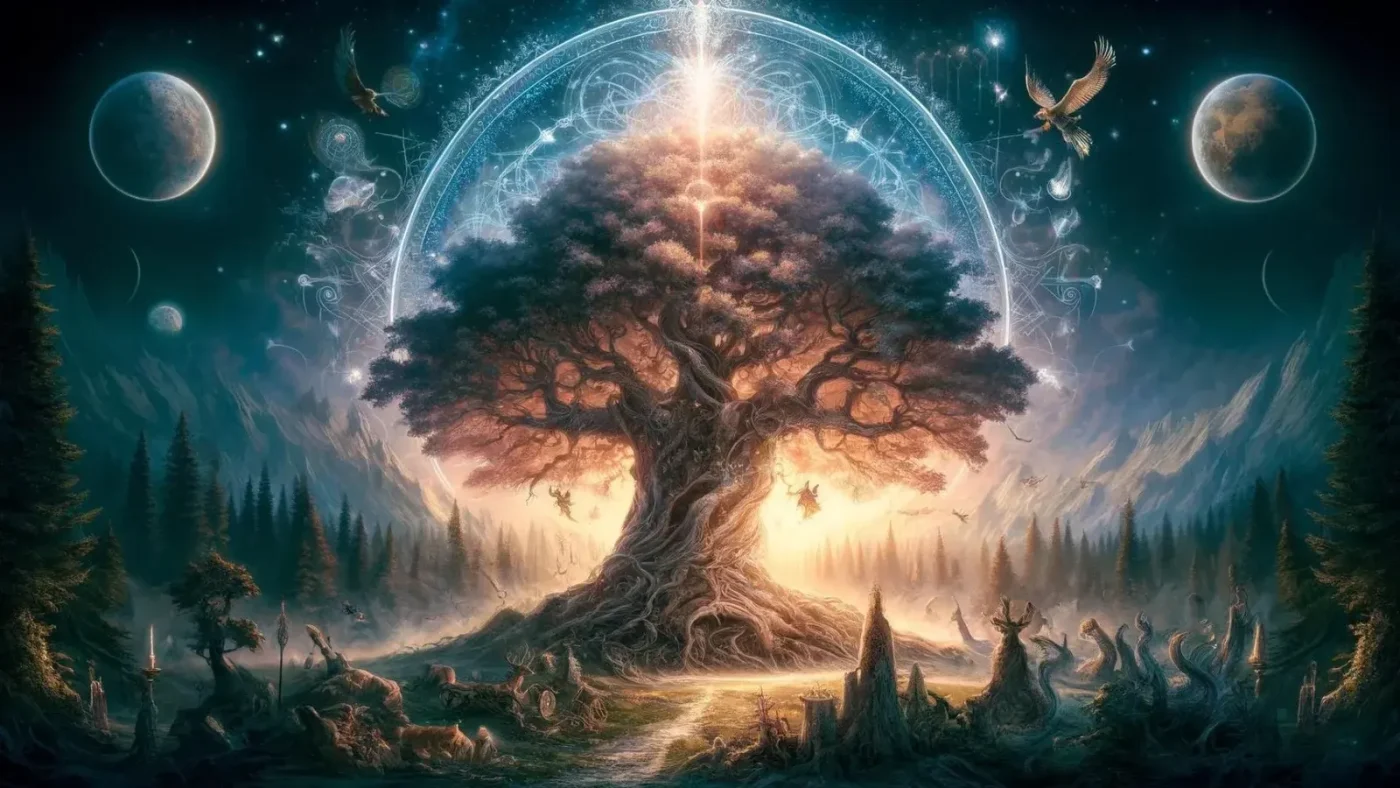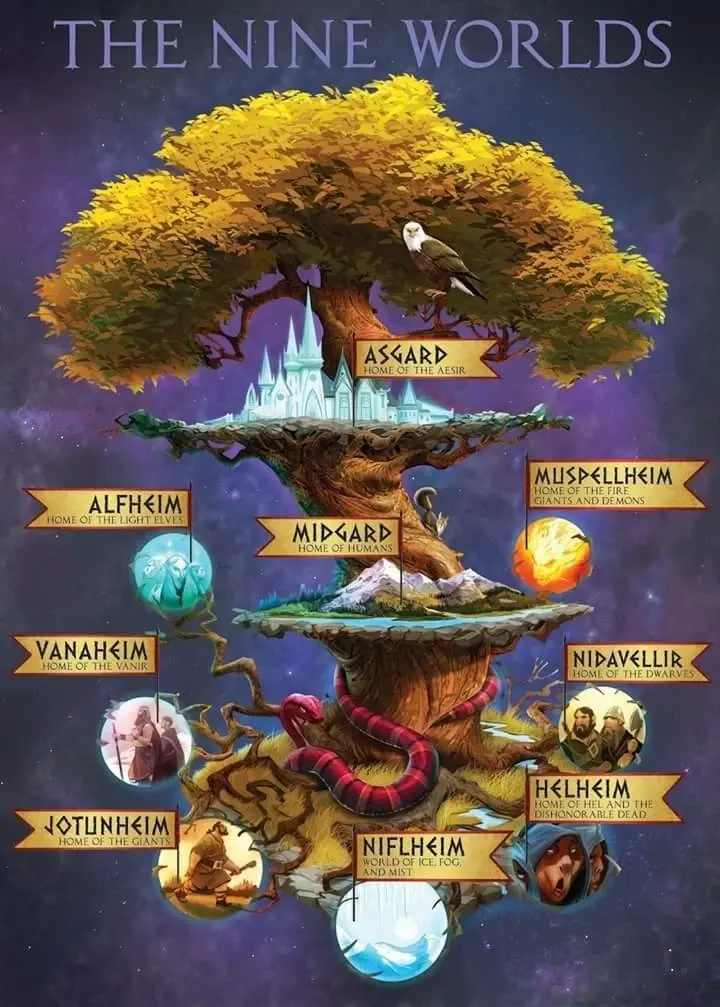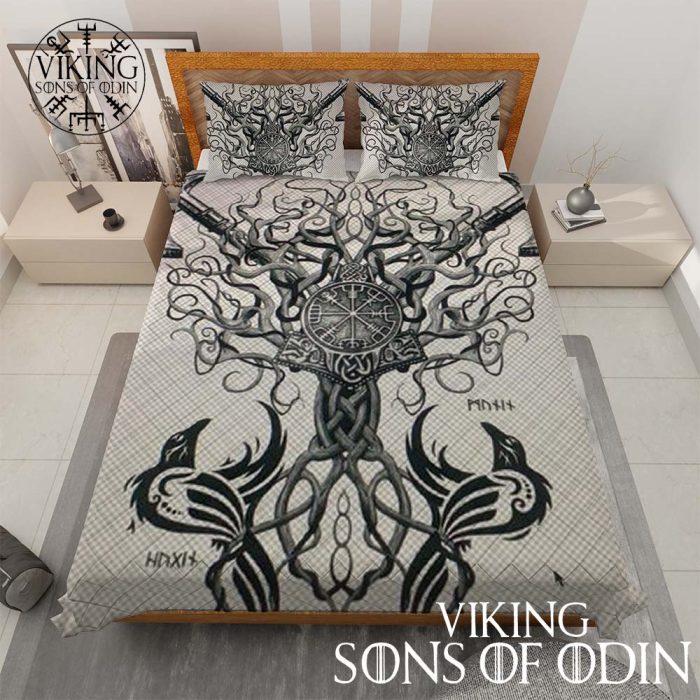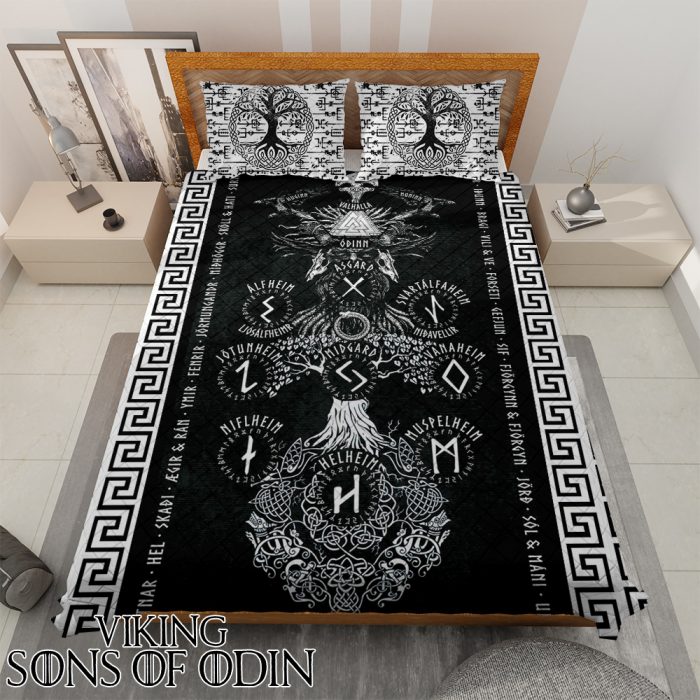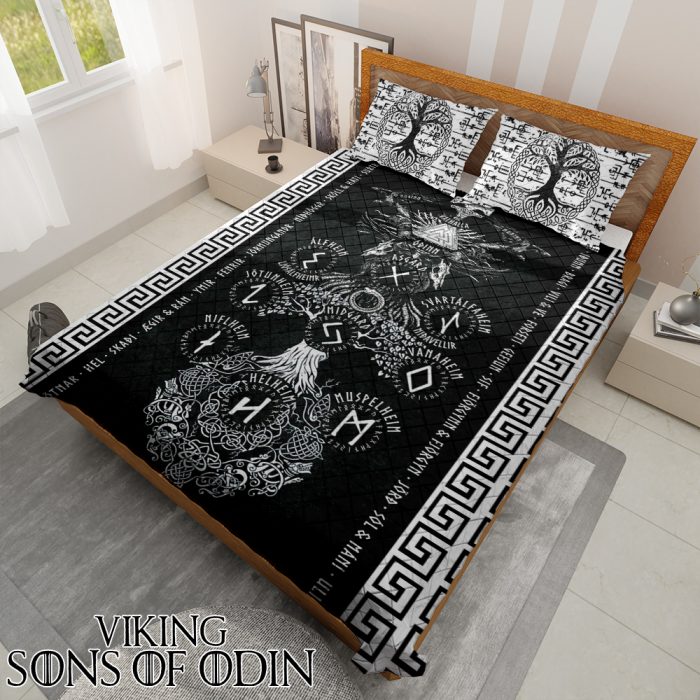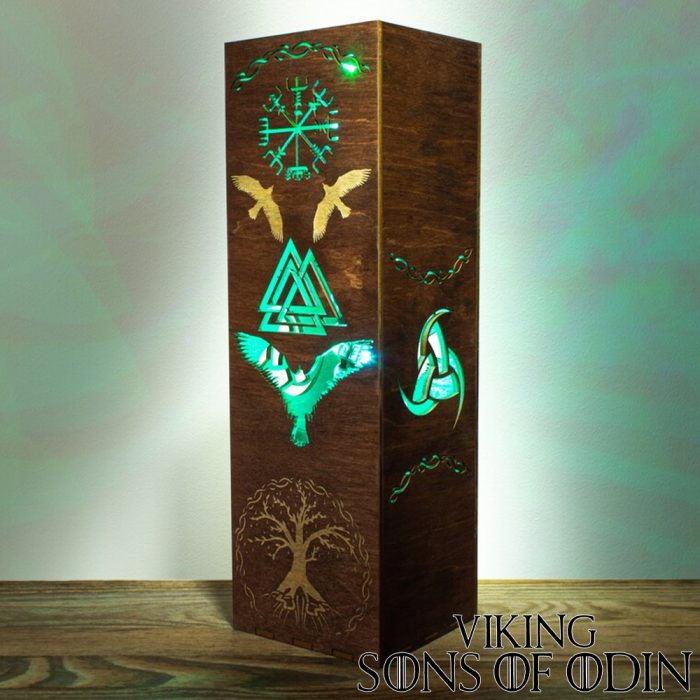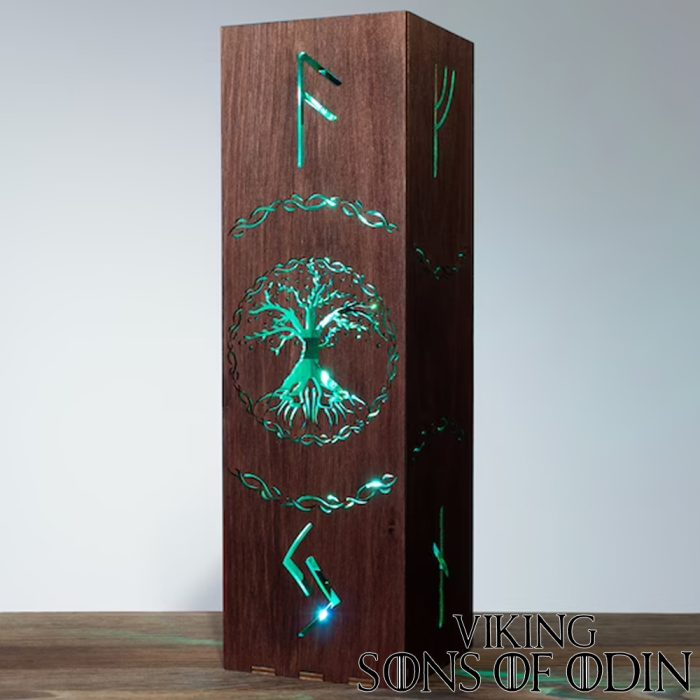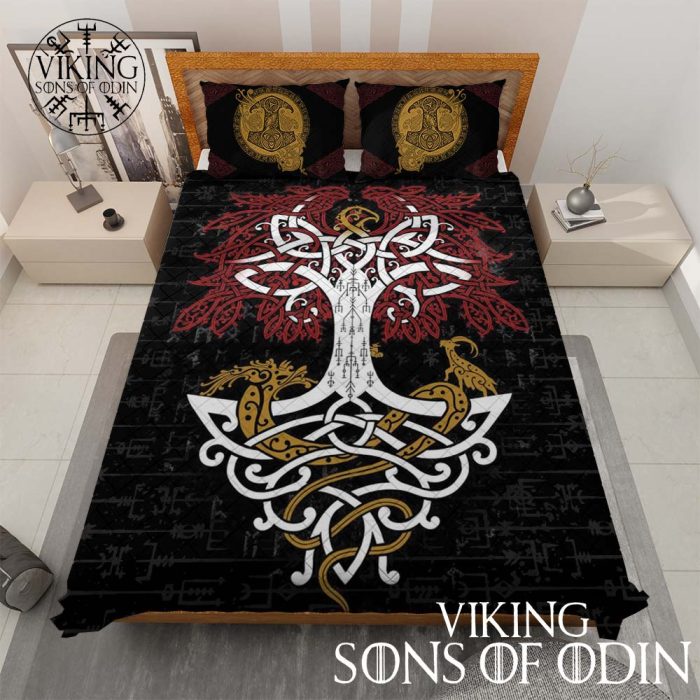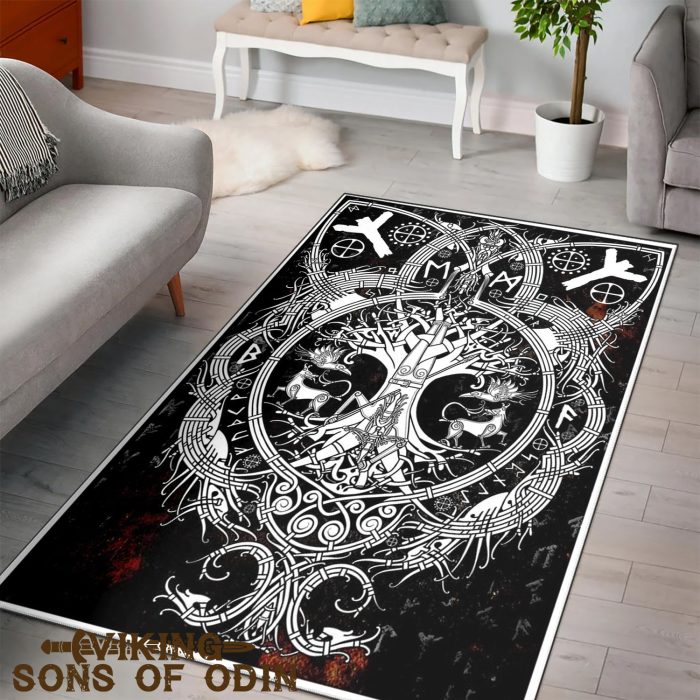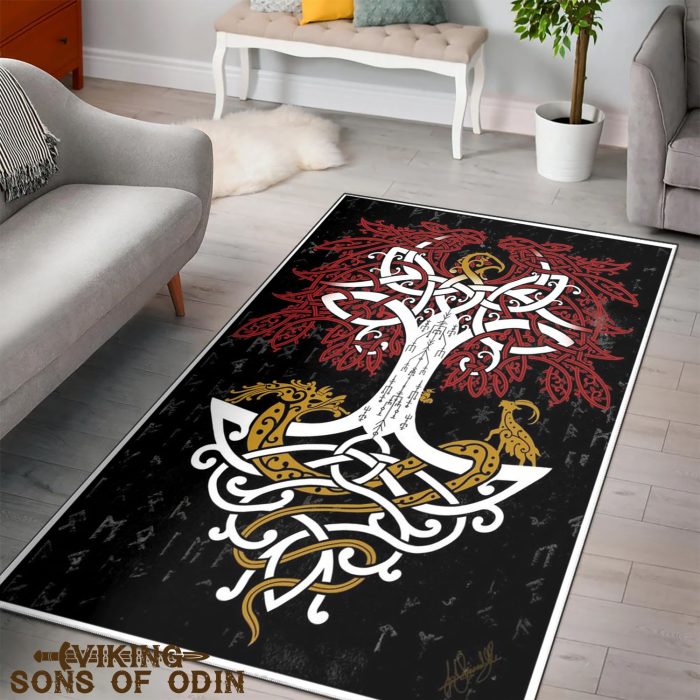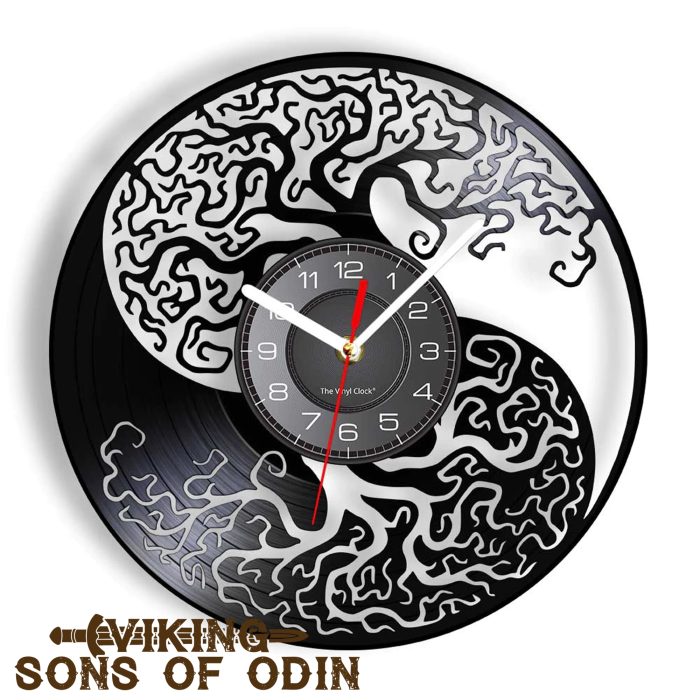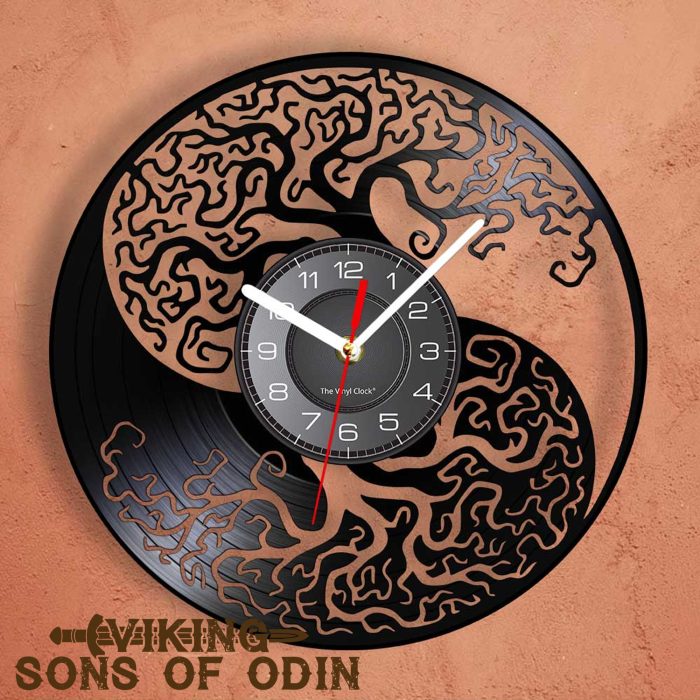Nordic Discovery
Yggdrasil: The Norse Tree of Life That Connects the Nine Worlds
Have you ever imagined a tree so vast and ancient that it links the heavens, the earth, and the underworld? In Norse mythology, that tree is Yggdrasil — the Tree of Life. More than a sacred symbol, Yggdrasil is the living axis of the universe, embodying cosmic order, spiritual wisdom, and the unbreakable bonds between realms. Its branches reach to the skies, and its roots stretch into the deepest darkness.
Let’s explore this awe-inspiring tree, the Nine Worlds it connects, the creatures it shelters, and its powerful symbolism in Viking belief and beyond.
What Is Yggdrasil?
Yggdrasil is a massive ash tree that stands at the center of Norse cosmology. The name “Yggdrasil” roughly translates to “Odin’s horse,” referring to the god’s self-sacrifice on the tree to gain knowledge of the runes. This act links Yggdrasil directly with wisdom, death, rebirth, and spiritual enlightenment.
As the central pillar of the cosmos, Yggdrasil holds together all of existence. The gods convene at its base, and it is where the threads of fate are woven.
The Nine Worlds Connected by Yggdrasil
Yggdrasil’s roots and branches reach into all realms of existence, binding them together:
- Asgard – Home of the Aesir gods (like Odin and Thor), dwelling at the top of the tree.
- Vanaheim – Realm of the Vanir gods, associated with fertility, nature, and foresight.
- Alfheim – Land of the Light Elves, radiant and ethereal beings of beauty and grace.
- Midgard – The world of humans, located in the middle of Yggdrasil’s trunk.
- Jotunheim – Realm of the giants, a wild and chaotic world of formidable beings.
- Svartalfheim/Nidavellir – Home of the dwarves or dark elves, master blacksmiths and crafters.
- Niflheim – A realm of ice, mist, and the ancient wellspring of creation, Hvergelmir.
- Muspelheim – A world of fire, home to fire giants and ruled by the blazing Surtr.
- Helheim – The underworld realm of the dead, ruled by the goddess Hel.
Together, these Nine Worlds represent the complexity and balance of life — creation and destruction, light and darkness, divine and mortal.
Symbolism and Significance of Yggdrasil
Yggdrasil is more than just a mythological tree — it is a profound symbol embodying core themes in Norse belief:
Interconnectedness
All realms are connected through Yggdrasil, reflecting the Norse idea that everything in the universe is interwoven. Gods, mortals, and mythical beings all play a part in the grand design.
Life, Death, and Rebirth
Its roots touch the underworld while its branches reach the divine. This structure mirrors the natural cycle — birth, growth, decay, and renewal — echoing the Norse acceptance of impermanence.
Wisdom and Sacrifice
Odin hung himself on Yggdrasil for nine nights to obtain the runes, symbols of knowledge and power. This tale underscores the belief that wisdom comes through suffering and personal sacrifice.
Resilience
Despite being constantly attacked by destructive forces, Yggdrasil endures. It’s gnawed at by beasts, yet it continues to sustain the cosmos — a powerful metaphor for inner strength and perseverance.
Mythical Creatures of Yggdrasil
Many mystical beings reside in and around Yggdrasil, each representing elements of Norse cosmology:
- Nidhogg – A dragon who chews at the roots of the tree, symbolizing chaos and the constant threat to order.
- Ratatoskr – A mischievous squirrel that scurries up and down the trunk, delivering messages and stirring conflict between Nidhogg and the eagle above.
- Eagle – Atop Yggdrasil sits a nameless eagle with great knowledge. A hawk named Vedrfolnir perches between its eyes.
- Four Stags – Dain, Dvalin, Duneyr, and Durathror feed on the tree’s foliage, representing the cycle of nature.
- The Norns – Three maidens of fate — Urd (past), Verdandi (present), and Skuld (future) — dwell at the base of Yggdrasil, spinning the threads of destiny.
These beings contribute to the balance and movement of the world tree, making it a dynamic, living force.
Yggdrasil in Modern Culture
Yggdrasil continues to inspire modern storytelling, appearing in fantasy novels, video games, Norse-inspired tattoos, and spiritual movements. From Marvel’s Thor films to God of War, this sacred tree serves as a symbol of connection, continuity, and the mystery of existence.
In a fragmented modern world, Yggdrasil reminds us that all things — past and present, living and dead, divine and mundane — are part of a unified whole.
Conclusion
Yggdrasil, the Norse Tree of Life, stands not only as a mythic axis but as a timeless symbol of connection, strength, and the wisdom that comes from embracing the cycles of nature. By understanding Yggdrasil, we deepen our appreciation for Norse mythology and its relevance to our lives today.
Want to honor the roots of Viking heritage in your space? Explore our Norse-themed home decor inspired by the mighty Yggdrasil.

